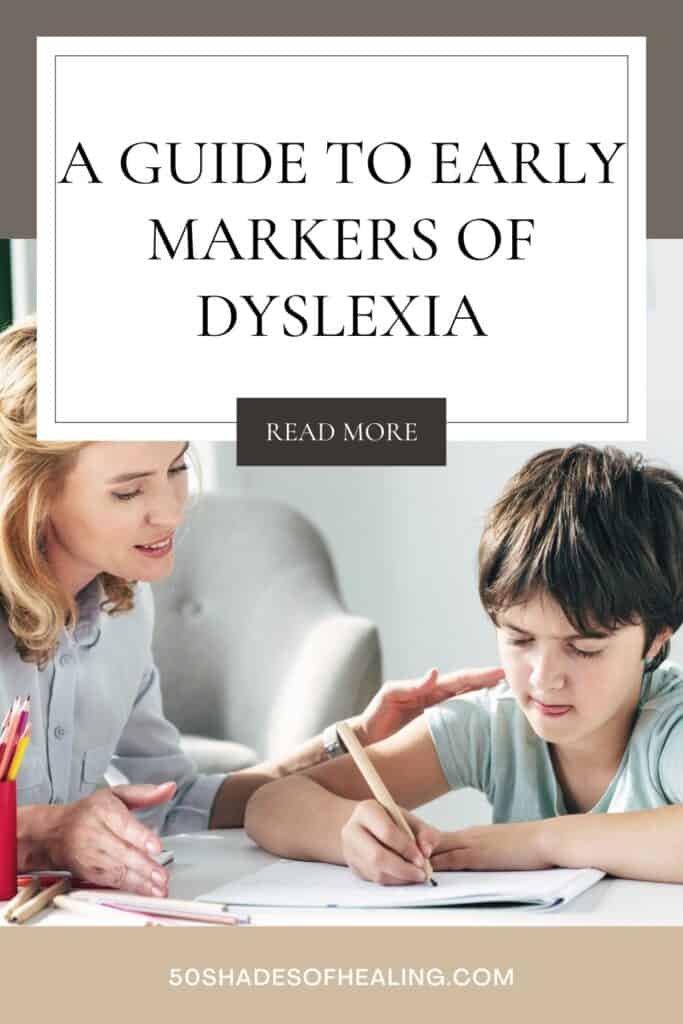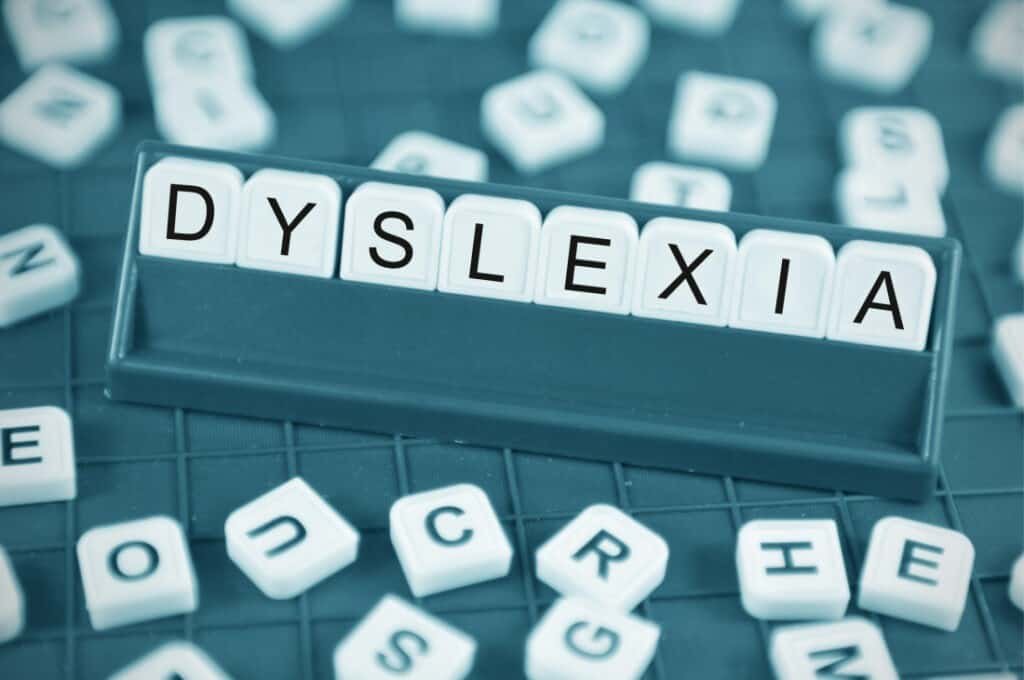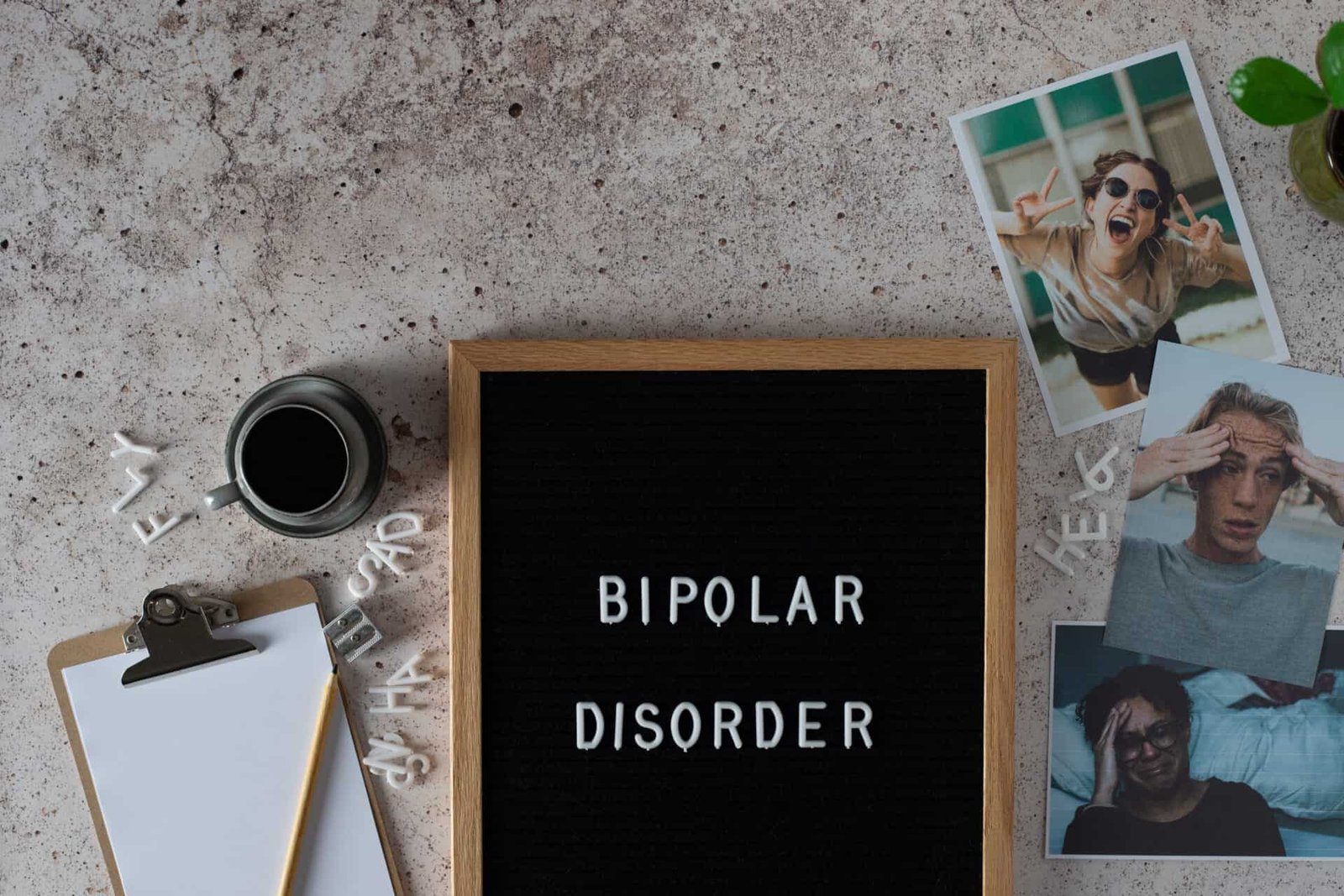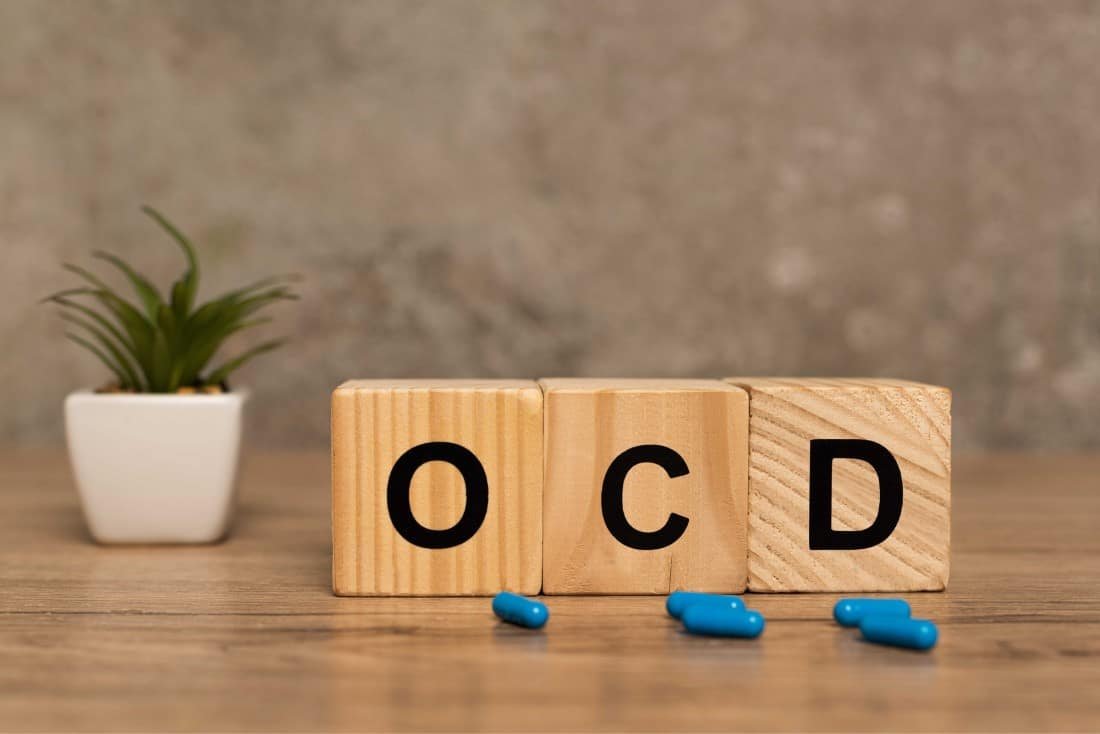A Guide to Early Markers of Dyslexia
Dyslexia is a neurological disorder that affects reading skills. There are several early markers of dyslexia that parents and teachers can look for. This guide provides an overview of some of the most common indicators of dyslexia in young children.
Read on to learn more!

Dyslexia is often misunderstood as an inability to read when in fact, it has nothing to do with the ability to read.
Instead, dyslexics have a hard time understanding that letters and groups of letters called words, which are used to make sense out of writing, take on different sounds.
This confusion can be traced back to problems with the way the brain interprets written words.
So while most people see a picture of a dog and instantly know how to pronounce that word, someone with dyslexia may see the same sentence and hear something completely different.
Dyslexia is a developmental disorder that affects the part of the brain that controls language and the ability to read.
Many people believe dyslexia is directly linked to vision, but this is simply not true.
Vision problems can, in fact, interfere with accurate reading, but dyslexia is a different issue altogether.
People with dyslexia are not blind and do not have any trouble seeing letters or words.
The confusion comes from within their brains as they process written information differently than most people.
If you’re concerned that your child may have dyslexia, it’s important to know what the early markers of dyslexia are.
Early intervention is key in helping children with dyslexia overcome their reading challenges.

What causes dyslexia?
Dyslexics have different ways of perceiving and understanding the world around them, which makes it possible for them to have trouble learning how to read in school.
The inability to properly process written information can be traced back to their ancestors’ history of reading problems.
Research has also found that dyslexics have difficulty hearing and interpreting sounds in language, which can cause them even more confusion when reading.
Dyslexia is a learning disability that affects one’s ability to read.
It is a neurological disorder, meaning it is in the brain of the person and they do not choose to have this affliction.
Many parents and teachers don’t know how to identify early markers of dyslexia in children.
This can lead to delays in getting help for the child, which can impact their future education and career prospects.
Dyslexia is a neurological disorder that affects reading skills. It can be very hard for children with dyslexia to keep up with their peers in school.
If dyslexia is not identified and treated early, it can have a negative impact on a child’s education and future prospects.

Early Markers of Dyslexia
Dyslexia has been reported to affect 10% of the population.
If you know someone who struggles with reading and language processing then you may want to take note and see if these symptoms sound like their own:
Short Attention Span:
People with dyslexia often struggle with staying focused on what they are reading or listening to for very long periods of time because their mind becomes exhausted quickly from trying to make sense out of their surroundings when there is more than one thing going on at once.
Transposition:
This means that numbers, words, or letters are transposed in a word. For example instead of saying “doll”, they might say “ol”.
Disorganized:
This can be in the form of physically being disorganized, for example not knowing where their belongings are, or the disorganization can occur within themselves; their thoughts are scattered and unclear to themselves.
Poor Comprehension:
Poor comprehension is near to impossible for an individual with dyslexia to achieve unless they receive specific training in working with someone who knows how to teach them or a tutor who specializes in working with children who have dyslexia.
Reading Aloud:
Many people with dyslexia have difficulty reading aloud. They tend to slur and stumble over their words.
Problems with Homonyms:
Homonyms are words that sound alike but mean something different, for example, “hear” and “here”. People with dyslexia often have problems distinguishing the two.
Oral Expression:
When talking to a person with dyslexia it is obvious they are unable to express themselves well and in some cases, they will not even talk at all because they are afraid of the humiliation that might occur if they do not speak properly.
Homophones:
Homophones are words that sound the same but have different meanings, for example, “their” and “they’re” or “then” and “than”.
Naming:
Naming is another problem an individual with dyslexia may have.
Rote Memory:
People who do not have dyslexia will tell you that when they read something they see it in their mind, or that they picture what is happening when they read.

Problems That May Arise Due To Dyslexia
In dyslexia, there are typically problems with the following:
1. Word-level reading – this means that individuals typically have trouble recognizing which words make up a sentence. They also have trouble differentiating between similarly spelled words
2. Phoneme Awareness – Individuals with dyslexia typically don’t recognize phonemes as distinct sounds
3. Phonics – Reading in dyslexia is often very literal or word-by-word, meaning it’s difficult for an individual to comprehend the meaning of sentences by just looking at the words on the page or hearing them aloud
4. Fluency – The ability to read text smoothly and quickly is a major issue for individuals with dyslexia
5. Reading Comprehension – Not recognizing sentences as a whole can cause comprehension issues
6. Spelling – Some individuals have trouble spelling accurately or at all, while others have trouble spelling the same words differently than they are pronounced (e.g., elephant and ignorant)
7. Writing – Writing is extremely difficult or impossible for some children with dyslexia
8. Math Skills – Dyscalculia is the name given to mathematical difficulties that may accompany dyslexia
9. Attention – Individuals with dyslexia often have problems sustaining attention over long periods of time, as well as being easily distracted
10. Variance – Typical individuals with dyslexia typically have a very consistent pattern of difficulties in all areas of reading, writing, spelling and math
11. Emotional regulation – Individuals with dyslexia often feel lots of anxiety or frustration when they try to read or write
12. Concentration and focus – Individuals with dyslexia often have trouble sitting down alone to read because they are easily distracted
13. Memory – Individuals with dyslexia often have trouble remembering things, even simple tasks like remembering where they put something
14. Learning Style – Dyslexics are usually “active learners,” meaning they usually have trouble looking at pictures for a long period of time, in contrast to auditory learners who typically have no problem sitting through lectures, “visual learners” who have no problem taking notes from a blackboard and those who learn best by physically doing something, like tinkering with an engine
15. Parenting Styles – Parents of individuals with dyslexia will often take on the role of personal teacher for their children, as this helps their children learn how to both read and spell effectively
A great deal of research has been conducted over the years regarding dyslexia and its causes.
In the 1980s and 90s, a series of different studies led to the discovery that dyslexia is genetic and has nothing to do with vision.
However, it has since been discovered that dyslexics themselves often believe it’s related to vision.

Early Markers of Dyslexia FAQ
When does dyslexia typically manifest?
Dyslexia typically manifests when a child is first learning to read and write.
What are some common symptoms of early markers of dyslexia?
Some common early markers of dyslexia are difficulty with phonemic awareness, or the ability to hear the individual sounds in words, and trouble with word decoding or figuring out the meaning of a word based on its individual letters.
How do I know if my child has dyslexia?
There are certain red flags to look out for if you suspect your child may have dyslexia. Some common early markers of dyslexia are difficulty with phonemic awareness, or the ability to hear the individual sounds in words, and trouble with word decoding or figuring out the meaning of a word based on its individual letters. If you suspect that your child is struggling with any of these skills, it’s important to talk to your pediatrician about getting a proper diagnosis.
Is There A Cure For Dyslexia?
There is no cure for dyslexia, but early detection and intervention are key. With the right help, most people with dyslexia can improve their reading skills and lead successful lives. There are a number of interventions that have been proven to be effective, including specialized tutoring, accommodations in the classroom, and therapies that target phonemic awareness and reading fluency.
What Helps Kids With Dyslexia Succeed In School?
There is no one-size-fits-all answer to this question, as the best way to help a child with dyslexia succeed in school will vary depending on the individual child’s needs. However, some of the most effective interventions for dyslexia include specialized tutoring, accommodations in the classroom, and therapies that target phonemic awareness and reading fluency. If you suspect your child may have dyslexia, it’s important to talk to your pediatrician about getting a proper diagnosis and finding the right assistance. With the right help, most kids with dyslexia can improve their reading skills and lead successful lives.
Did you know that there are several early markers of dyslexia in children? If your child is showing any of these signs, they may be at risk for developing dyslexia.
This guide provides an overview of some common indicators and what to look out for.
You can help prevent your child from struggling with reading by learning about the warning signs as soon as possible.
The earlier you can intervene, the better their chances will be! It’s never too early to start helping your child develop good reading habits so they don’t fall behind in school.
And it starts with understanding how to spot potential problems before they become bigger issues down the road.

That’s why we created this guide and hope it helps parents like yourself understand what’s going on with their kids’ development so you can get them the help they need sooner rather than later!
Dyslexia means a lot of different things to a lot of different people, and there are many misconceptions about it that are even more problematic than the learning disability itself.






